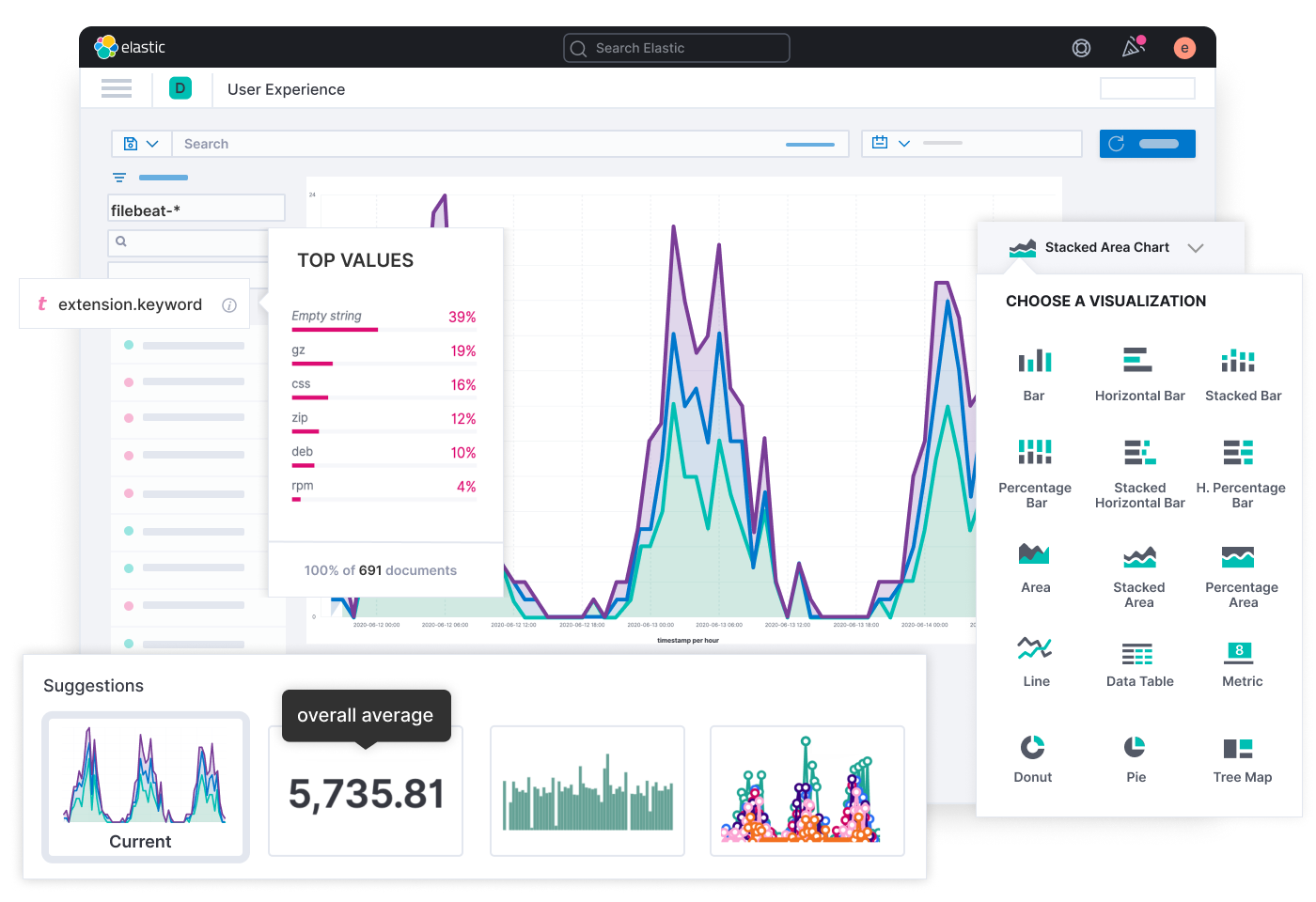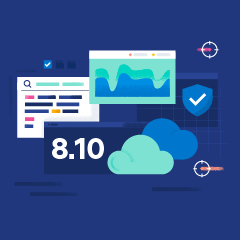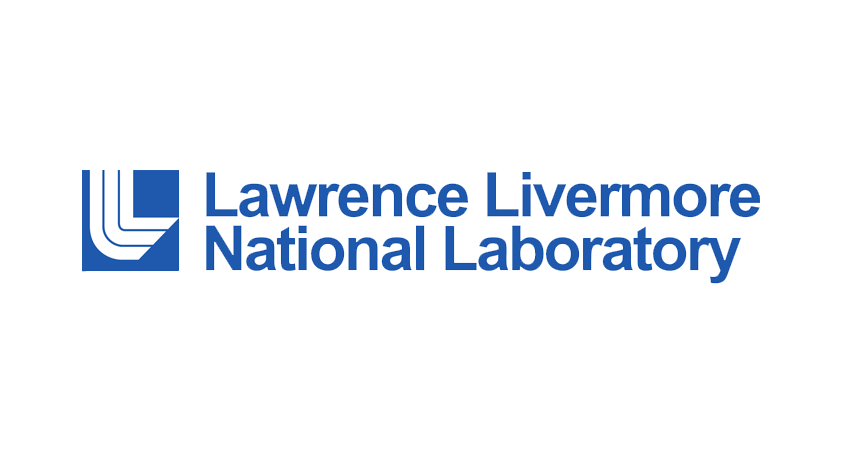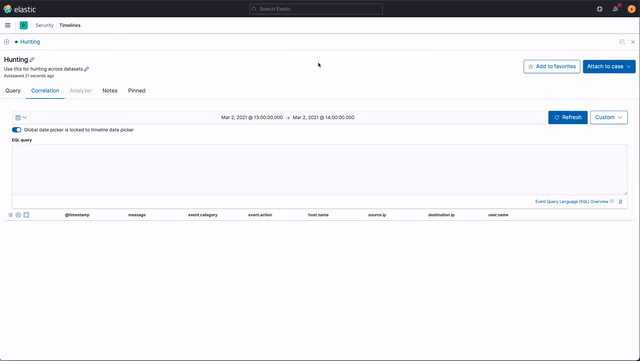Public sector
Transform massive amounts of data into mission-critical insights through an AI-powered data platform.
Learn how public sector organizations around the world are using Elastic.
View customer examplesStrengthen your operational resiliency with full visibility into your IT environment.
Get the playbook96% of public sector and education customers say they'll continue or increase their use of Elastic next year.
See more benefits for public sectorSignUpCTA
Public sector experts from Elastic and IDC are sitting down to discuss generative AI in global government and education: the data, the trends, and the challenges. Sign up to join us live on November 8, or to receive the on-demand recording.
Register now for the virtual eventWhen you can ingest, store, and analyze all forms of data in one unified platform, the possibilities are limitless. Government and education organizations are using Elasticsearch to deliver security, logging, infrastructure monitoring, AI insights, operational efficiencies, and more.
Enable decision superiority on everything from application performance to adversarial activity. Elastic unifies your data in real time and can apply AI insights, enabling you to know exactly what’s happening and make better decisions in the moment.

Empower security personnel with security incident and event management (SIEM) , extended detection and response (XDR), and cloud security. Make Elastic an essential connective data layer in your Zero Trust strategy.
Squeeze more value out of your budget and data by doing more with the same tools. Elastic offers observability and security solutions built on a unified search-based platform. When your data is accessible, and findable via one system, the use cases are limitless.
Use Elastic for full-suite observability, including logging, application performance monitoring (APM), AI operations, and more from a single consolidated solution built on the power of search and findability.





"Elastic was well-suited for our needs, especially when it came to feeding data into a centralized repository and then visualizing the information. Elastic's performance, responsiveness, and user interface, as well as its ability to handle large volumes of data were critical to our decision, given recent executive orders that require us to search back through up to two years' worth of data."
Elastic serves as a data mesh layer that connects the pillars in an organization's Zero Trust architecture (ZTA). This data layer unifies and operationalizes the disparate tools, systems, and data in an agency’s ZTA, speeding Zero Trust adoption and lowering costs. Read more about the role of a unified data layer in Zero Trust.
Elastic helps build mission and operational resilience by providing holistic visibility across an agency's entire IT environment. Elastic Observability unifies log management, application performance monitoring (APM), AIOps, and more – in order to quickly detect and surface anomalies, and speed MTTx. Over the long term, this holistic approach to monitoring and observability improves government resilience as well as builds consistent and reliable experiences for employees, citizens, warfighters, and students. Learn more about operational resilience for government agencies.
Yes. Data is the lifeblood of digital transformation, powering digital services, cybersecurity, and operational resilience for government agencies and educational institutions. Elastic provides a unified data platform to ingest all types of data (structured and unstructured) in one place, bringing together disparate data, tools, and teams. Without this single source of truth, digital transformation can quickly become costly and complex. Once your data is in Elastic, you can use it for multiple use cases, from real-time situational awareness to generative AI.
By using fewer technology tools, you can reduce overall technology licensing costs, as well as save costs on employee training. Additionally, by using a unified data platform for multiple use cases (such as cybersecurity and application performance monitoring), you create a single source of truth for real-time decision making and cross-team collaboration. Learn more about the benefits of tool consolidation for public sector.
When public sector agencies use their own proprietary data with large language models (LLMs), they can produce meaningful generative AI outputs that are hyper-relevant and aligned to their missions. Elastic serves as the secure and trusted bridge between organizations' private data and their choice of LLM. This integration can help organizations provide personalized digital services for citizens, enable government employees to quickly find answers from documents and systems, and connect law enforcement agencies with accurate intelligence at the right time. Learn more about generative AI in public sector.
A unified data mesh layer breaks down data silos by allowing data to remain in its original, decentralized location at the edge – but be accessed, queried, and analyzed holistically. Traditionally, in order to get a complete view of their data, organizations would have to copy or move large quantities of data to a central location for analysis. This is time- and bandwidth-consuming, and leads to delays and version control issues. Elastic can serve as a data mesh that connects all of an organization’s data – no matter the type or location – for real-time visibility and accurate insights. Read more about Elastic’s approach to data mesh.
As public sector organizations look to modernize their IT and reduce dependence on outdated legacy systems, they should look to consolidate tools as much as possible, instead of purchasing separate solutions to address separate tech challenges. Elastic is a unified data platform that can provide significant return on investment by consolidating tools around data-centric use cases, from threat hunting to application performance monitoring. This ensures that your IT systems are interoperable and rely on a single source of truth – while at the same time reducing licensing costs. Learn more about reducing legacy IT.




















